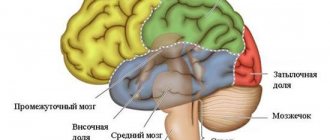Teenage years
- the life stage at which the transformation of a girl into an adult woman and the formation of her personality occurs.
Another name for this period is youth
.
In youth, individuality and basic life concepts are formed. Young girls
are no longer girls, but not yet adult women. They are a kind of hybrid, combining the anticipation of adulthood and the remnants of a just-ended childhood.
This is a challenging, critical time for developing adolescents.
Characteristics of adolescence
During adolescence, girls grow and develop rapidly. These processes usually begin at the age of 11 years. The hormonal changes underlying these changes occur several years earlier. This may be the cause of increased anxiety and low mood in girls. They start puberty earlier than boys, so they seem to develop much faster. Very young girls may not be physically different from their mothers and are even capable of having their own children. It is not surprising that for some girls this development of events causes concern and even depression, especially if they are not growing and changing as quickly as their friends.
Teenage girls begin to think and feel differently. At this time, they develop close relationships outside the family circle, usually with peers. Intrafamily relationships are also being transformed. When teenagers begin their own lives, parental care fades into the background.
The first disappointments also usually occur during adolescence. At this time, young people begin to form their own worldview, often completely different from that of their parents. To feel like independent individuals, teenagers tend to spend more time outside the home or talk to friends on the phone for a long time. This behavior can irritate parents, but for teenagers it is an important way of developing their own self and independence from the family. Through such communication with friends, a growing girl learns to understand how to interact with other people.
During this period, clothing, fashion and appearance in the eyes of a teenager acquire special significance. They are used both as a means of expressing their unity with friends and demonstrating their increasing independence from family.
Adolescence, or adolescence, a stage of the life cycle that does not have clear time boundaries
. The World Health Organization defines adolescence as a developmental period that runs from 10 to 19 years of age and includes two stages:
- early adolescence (10-14 years),
- late adolescence (15-19 years old).
Adolescence begins during puberty
, when a series of unusually rapid physical and physiological changes occur in the body, which culminate in the final development of the genital organs and the ability to engage in sexual relations and have children. However, youth is not limited to these changes. This period is also characterized by important psychological and social changes occurring in the girl.
Parents often feel rejected by their own children, and to some extent they are. Such temporary separation from the family is necessary for a young girl to become an adult, mature personality. Although clashes and conflicts between younger and older generations may occur frequently, teenagers tend to have a high opinion of their parents. Disputes and disagreements are usually not directed specifically at parents. Teenagers provoke them, rather, to prove their independence from their family. This is especially important if in the future they will live separately from their parents.
In addition to trying to become as independent as possible, teenagers develop new hobbies and goals. They are not always able to cope with problems on their own: often, when faced with difficulties, they are ready to attribute failure to lack of experience. This can lead to rapid changes in self-esteem and behavior. Having lost self-confidence, young people are able to behave like children. This is more often manifested in mood swings and increased irritability than in quarrels and disagreements.
Despite the fact that the behavior of adolescents may cause concern to parents, there should be an atmosphere of tolerance in the family.
Psychological changes
We have already talked about what physiological changes can be observed during the transition period, now it’s time to consider the symptoms that describe puberty from a psychological point of view.
- Formation of complexes. A disproportionate figure, insufficient or excessive breast size, the appearance of subcutaneous fatty tissue, problematic skin - all this can greatly reduce a girl’s self-esteem. She may also begin to feel complex due to bad breath or sweat. There may be a feeling of discomfort due to menstruation, which is somewhat frightening.
- Weakness and fatigue. It's all about the body's inability to keep up with internal changes. You don’t need to think that the girl is just being lazy and doesn’t want to do anything, she really is experiencing severe weakness.
- Mood swings. Due to changes in hormonal levels, the girl develops an unstable emotional state. Apathy may be replaced by increased excitement, irritability and short temper may be observed, the girl may also be whiny, despondency, hatred and rage without control, even towards the closest people, are possible.
- Denial and negativism. When communicating with a teenage girl, you can often hear that she wants to feel her independence and does not want to listen to anyone’s opinion.
- Decreased intellectual abilities. The young lady's memory may deteriorate and the ability to form her own thoughts may disappear. This is all due to hormonal changes.
- Self-identification. The girl realizes that she can disobey the advice of her mother and father if their opinion does not coincide with her views. Through her actions, she tests her parents and her relationship with them to the limit.
Sexual development of a girl in her youth
In youth, the ability to instantly and passionately fall in love appears. The peculiarities of youthful falling in love are explained by the delicacy of relationships between people of this age.
In early youth, a girl can literally fall in love at first sight. Usually she does not expect reciprocity at all; sometimes the object of passion does not even know that someone liked him. The beloved becomes an idealized image, a movie star, a famous athlete, etc., that is, someone who has the qualities of a person who can, to some extent, replace a girl’s parents.
During adolescence, sexual relations with people of the opposite sex occur more often than is usually reported, although, as a rule, they are in the nature of training exercises and exploration. It is known that in youth sexual development usually begins with autoeroticism
. At this stage, knowledge of the opposite sex is carried out through dancing, sports, games, affection, as well as through the very common interest in pornographic magazines among teenage boys.
In the behavior of girls, masculine traits can sometimes be observed, in boys - feminine. As a rule, this is a normal manifestation of not yet fully formed sexuality.
Girls at this time tend to idealize their mother. They see positive, bright qualities in her, learn feminine tricks from her and evaluate themselves, adding to themselves the positive traits of their mother. Something similar happens among teenage boys in their relationships with their fathers.
If a teenager understands the essence of the changes occurring in his body, adequately perceives the appearance of typically female or male characteristics, he develops normal sexuality and a correct understanding of the responsibility associated with it.
13. Personality changes in girls during adolescenceReport first presented at a meeting of the American Orthopsychiatric Association
When analyzing adult women with neurotic disorders or difficult characters, two typical development options are often found:
Let's consider the characteristic features of each of them:
1. The first personality changes occurred in adolescence, although in all cases the conflicts that gave rise to them took place in early childhood. Often, teenage girls did not have external manifestations that alarmed others and gave the impression of a pathology that posed a danger to the girl’s future or required treatment. These manifestations were perceived by others as temporary difficulties, natural during this period, or even as desirable and promising signs.
2. The onset of psychopathological changes approximately coincided with the onset of menstruation. This connection was not obvious, since the patients either did not realize the coincidence, or, even if they saw the coincidence in time, they did not attach any significance to it, because they did not notice or “forgot” the mental meaning that menstruation had for them. Personality changes, unlike neurotic symptoms, develop gradually, and this also masked the real connection. It was usually only after patients became aware of the emotional impact the onset of menstruation had on them that they suddenly began to see the connection. Based on this, I am inclined to distinguish four types of personality changes:
a) - the girl is involved in sublimation activity; she develops an aversion to erotica;
b) - the girl is involved in the erotic sphere (obsessed with boys); loss of interest and ability to work;
3 - the girl becomes emotionally isolated, acquires the attitude of “not giving a damn about everything,” and does not put her soul into anything;
4 - the girl develops homosexual tendencies.
My classification is incomplete
And it does not, of course, include a whole range of existing possibilities (for example, the development of a prostitute and a criminal), and concerns only those changes that I had the opportunity to observe directly or could reconstruct in adult patients who came for treatment. In addition, this division is arbitrary, as any division by type of behavior will inevitably be, implying a fictitious “pure type of behavior,” while reality always allows for any mixture of traits and any intermediate states. The girls of the first group showed a natural interest in the anatomical and functional differences between the sexes and in the mysteries of reproduction. These girls were attracted to boys and loved to play with them. By the time of puberty, they suddenly delve into thoughts, religion, ethics, art or science, losing interest in the erotic sphere. Usually a girl going through such changes does not come for treatment at this time because the family is delighted with her seriousness and lack of desire to flirt. The difficulties are not yet obvious. They will appear later, especially after marriage.
The pathological nature of such changes is easy to overlook for two reasons:
1 - during these years a person is expected to develop an intensive interest in mental activity;
2 - the girl herself for the most part does not realize that she really has an aversion to sexuality - she only feels that she is losing interest in boys and she no longer likes dancing, parties, flirting and she is gradually moving away from it.
The second group gives almost the opposite picture. Very gifted, promising girls lose interest in everything except boys, cannot concentrate, and give up any mental activity as soon as they engage in it. They are completely involved in the erotic sphere. This change, like its opposite, is also considered “natural” and is defended with a similar rationalization: it is “normal” for a girl at this age to switch to boys, dancing and flirting. This is, of course, true, but what about these tendencies? The girl frantically falls in love with one boy after another, not really interested in any of them, and after she is convinced that the boy has been conquered, she leaves him or provokes him to leave her. She feels terribly unattractive, despite all evidence to the contrary, and usually avoids actual sexual relations, citing social prohibitions as a rationalization, although the real reason is her frigidity, which turns out to be true if she finally takes such a step.
She becomes depressed or expects disaster when there are no men around to admire her. On the other hand, her careless attitude to work is not at all the “natural” consequence of the fact that, due to the focus on boys, other interests have taken a back seat, as her defense implies. The girl is actually very ambitious and suffers from a feeling of inability to complete anything. For the third type of girls, prohibitions relate to both work and love. This is not always easy to notice. To a superficial observer, the girl may seem well adjusted to life. She has no difficulties in establishing contacts, she is friends with girls and boys, is very developed, talks openly about sexual topics, pretends that she has no difficulties at all, and sometimes enters into certain sexual relationships without getting emotionally involved in them .
In a way, she is a detached observer of herself, a spectator in her own life.
She may not admit to herself that she is indifferent, but at least sometimes she is acutely aware that she has no deep, real emotional attachment to anyone or anything. Nothing matters to her. There is a strong contradiction between her vitality, giftedness and her isolation. Usually she feels that her life is both empty and boring. The fourth group is the easiest to characterize. It includes girls who have turned their backs on boys completely and become passionately friendly with girls. The sexual nature of this friendship may or may not be conscious. If a girl is aware of the sexual nature of her inclinations, she may suffer from strong feelings of guilt, feeling like a criminal. Her attitude towards school or work is usually changeable. She is ambitious and at times shows great ability, but she often lacks assertiveness or has a "nervous breakdown" between periods of productivity. We have four very different types, but even a superficial observer, if accurate enough, will see that all four have one common tendency: lack of self-confidence as a woman, conflictual or antagonistic relationships with boys and an inability to “love” - whatever no matter what the word meant.
If they do not reject the female role altogether, they rebel against it or praise it, mostly in a sarcastic manner. In all cases, there is more guilt associated with sexuality than is admitted: “He is not free who laughs at his chains” (Schiller). Psychoanalytic observations reveal another striking similarity between these types of women, so strong that it makes you forget for a while about all their differences. They feel hostility towards all people in general, although it manifests itself differently towards men and women. While hostility towards men can vary in intensity and motivation, and is manifested externally relatively easily, hostility towards women is absolutely destructive, and therefore deeply hidden in the subconscious. They themselves can only vaguely guess about this enmity, but never realize its strength and the destructiveness of its consequences. All four groups of women have the strongest defensive attitude towards masturbation. In the process of analysis, they only sometimes manage to remember that they seemed to be doing this in early childhood, but more often they completely deny that this could ever have happened. They're pretty honest about it on a conscious level.
They typically do not masturbate into adulthood, or do so in a heavily disguised manner, and usually, on a conscious level, do not feel the desire to masturbate. As will be shown below, powerful impulses of this kind exist, but are completely separate from the rest of their personality and are associated with intense feelings of guilt and fear, and are therefore always difficult to identify. What explains the extreme hostility towards women? It is only partly explained by the history of their lives. Yes, the mother is reproached - for a lack of warmth, protection, understanding, for preferring her brother, for too harsh Puritan sexual prohibitions. All this is more or less confirmed by facts, but the women themselves feel that the existing suspicion, neglect and hatred of women is disproportionate to the “misdeeds” of the mother. The real background becomes clear from their attitude towards the female analyst.
Omitting technical details, omitting not only individual differences, but also the differences in the types of defense characteristic of the types under discussion, we gradually get the following picture: each patient believes that the analyst does not love her, that in fact she is full of malicious intentions, that she is in the way. her to be happy and successful, and, in particular, that she condemns her sex life and interferes with it or wants to interfere. As it is discovered that all this is a reaction to the patient's feelings of guilt and expression of fear, it gradually comes to the understanding that she has reason to be afraid, because her actual behavior in the process of analysis is dictated by a strong resistance and desire to defeat the analyst, even if it would be her own defeat. The patient's behavior, however, is an expression of hostility that exists only on the level of reality. The full extent of the hostility is revealed only by following the patient into her fantasy life - into dreams and daydreams. There her hostility was preserved in the most brutal archaic forms.
Rough, primitive impulses preserved in fantasies allow us to understand the depth of the feeling of guilt towards the mother and the maternal image
Moreover, these fantasies ultimately make it possible to understand why masturbation was completely abandoned and, even today, is still tinged with horror. As a rule, it turns out that evil fantasies invariably accompanied masturbation and thus aroused the feelings of guilt associated with it. In other words, the feeling of guilt was not about the physical process as such, but about fantasies. However, only the physical process could be stopped and the desire for it suppressed. Fantasies continued to live in the depths and, repressed at an early age, retained their infantile character. The patient is not aware of the existence of these fantasies, but continues to respond to them with feelings of guilt. However, the physical side of masturbation is also important. The strongest fears emanate from her, the essence of which is the fear that masturbation has caused irreparable damage, an injury from which it is impossible to recover. The content of this fear was never conscious among the patients, but it found numerous expressions in a variety of hypochondriacal manifestations affecting the entire body from head to toe - fears that there is something wrong with you as a woman, fears that you will not be able to get married and have children, and finally, the common fear in all cases - that you are unattractive.
Although these fears go back directly to physical masturbation, they can only be understood based on its psychological content. Fear says, “You had violent, destructive fantasies about your mother and other women. Therefore, you must be afraid that they want to destroy you in exactly the same way: “An eye for an eye, a tooth for a tooth.” The same fear of retaliation is responsible for the fact that the patient initially does not feel at ease with the analyst. Despite her mostly conscious belief that the doctor is kind and trustworthy, she cannot shake off the deep conviction that the sword hanging over her must fall. She cannot help but think that the analyst, in her opinion, is evil and only wants to torment her. She must walk a narrow path between the threat of displeasing the analyst and the danger of revealing her own hostile impulses.
Since she is characterized by a fear of the fatality of an attack, it is easy to understand why she feels a vital need to defend herself. This is what she does, becoming evasive and trying to win over the analyst. Hostility, therefore, at least in the upper layer, represents defense. Likewise, much of her hatred of her mother also represents a feeling of guilt towards her and a desire to protect herself from the fear associated with guilt by preemptively attacking. When this layer was finally processed analytically, the main sources of hostility towards the mother became emotionally accessible to verbalization. But their traces were visible from the very beginning: with the exception of the patients of the second group, who did enter into competition with other girls, albeit with terrible disdain, all the patients carefully avoided competition. Whenever another woman appeared on stage, they immediately left the stage. Convinced of their own unattractiveness, they felt inferior to everyone else. From the battle with these others they learned a tendency to avoid open competition, which could also be observed in relation to the psychoanalyst.
The real conflict of motives is hidden behind their feeling of obvious loss.
Even if in the end they cannot help but admit their competitive intentions towards the analyst, they do so only in terms of intelligence and ability to work, avoiding comparisons that would indicate competition with her as a woman. They, for example, persistently repress disparaging thoughts about the analyst's appearance or her clothing and become terribly confused if such thoughts surface. The need to avoid open competition arises precisely because in childhood there was particularly strong rivalry with the mother or older sister.
An excessive increase in a daughter's natural competitiveness with her mother or older sister was usually caused by one of the following factors: premature sexual development and introduction to sexuality; childhood bullying that prevented the development of self-confidence; marital conflicts between parents, forcing the daughter to take the side of one of them; open or disguised rejection by the mother; the father's demonstrative over-attachment to the little girl - from being surrounded by sincere care to open sexual assault. If we summarize the facts schematically, we will see how a vicious circle arises: jealousy and rivalry with mother or sister, - hostile impulses that constantly come to life in fantasies - guilt and fear of attack and punishment, - defensive hostility - increased fear and guilt. As I have already said, the guilt and fear coming from these sources are most strongly anchored in fantasies associated with masturbation.
These guilts and fears, however, are not limited to fantasies, but extend to a greater or lesser extent to all sexual desires and sexual relationships. They surround sexual relations with an atmosphere of guilt and expectation of misfortune. And they are largely responsible for the fact that relationships with men remain unsatisfactory. There are other reasons for this result, directly related to the attitude of patients towards men in general. I will mention them only briefly because they are not the main topic of this article. In general, a woman may retain a grudge against men, coming from childhood disappointment, and a secret desire to take revenge. Subsequently, due to the feeling of their own unattractiveness, they anticipate rejection from men and, naturally, react with hostility. To the extent that they have turned away from the overly conflictual feminine role, they often develop masculine aspirations and transfer their own-sex competitive attitude to relationships with the opposite sex, now measuring their strengths more with men than with women. If the woman in whom all these impulses arise really strives for a masculine role, then she may develop strong envy of men at the same time as a disdain for their masculine abilities. What happens when a girl of this type enters puberty?
Throughout puberty, libidinal tensions increase - sexual desires become more persistent and inevitably run into a wall of guilt and fear. A teenager already has a real opportunity to gain sexual experience. This increases feelings of guilt and fear. At this time, menstruation begins, which for a girl who fears the traumatic consequences of masturbation, on an emotional level means confirmation that she has indeed harmed herself. Theoretical knowledge of what menstruation is does not change anything, because knowledge lies on the surface, and fear lies in the depths, and they do not touch. The situation is getting worse. Desire and temptation are strong, and fear is no less strong. Living under the stress of conscious anxiety is unbearable: “I’d rather die than be afraid all the time,” patients say. Thus, in such a situation, vital necessity forces a person to look for means of protection, that is, he automatically tries to change his life position in such a way as to avoid anxiety or to reliably protect himself from it. All four types discussed protect themselves from anxiety in connection with their basic conflicts in different ways.
The difference in paths is explained by the difference in types
Different types develop opposing character traits and opposing inclinations, although they all have a common goal - to protect themselves from the same anxiety. The girl from the first group protects herself from fear by avoiding competition with other women and almost completely avoiding the female role. Her need to compete is torn away from her original soil and transplanted onto intellectual soil. The competition for the best character, the highest ideals, to be the best student, is so removed from the competition for a man that her fears are greatly reduced. Her desire for perfection simultaneously helps her overcome her guilt.
Such a radical solution provides enormous temporary benefits. She can feel satisfied for years. The other side of the coin is revealed when she finally comes into contact with men and especially if she gets married. You can often observe how her sense of self-sufficiency and self-confidence collapses, and an unexpectedly cheerful, capable and independent girl turns into a deeply dissatisfied woman, shocked by the feeling of her insignificance, easily falling into depression and not wanting to take responsibility for anything (especially - in family).
She turns out to be sexually frigid and, instead of having a loving relationship with her husband, begins to compete with him. The girl from the second group does not refuse to compete with other women. Her protest against all other females, always ready to burst out, stimulates her desire to defeat them, and, in contrast to the girl from the first group, she constantly experiences quite strong anxiety. Her typical way of protecting herself from anxiety is to cling to a man. While the first one is fleeing the battlefield, this second one is looking for allies. Her insatiable thirst for male admiration does not at all indicate that she naturally needs sexual satisfaction.
In fact, in real sexual relationships she also turns out to be frigid. Men serve her only as a means of calming down, and this becomes obvious as soon as her relationship with a boy, or later with a man, goes wrong. Her anxiety comes out, she becomes restless: she feels lonely, abandoned by everyone at once and lost. Winning male admiration also serves as a means of eliminating the fear that she is “abnormal.”
I've already talked about this feeling as an eruption of fear of the damage done to oneself by masturbation. She has too much guilt and fear associated with sexuality to allow her to build a satisfactory relationship with a man. Thus, only more and more “victories” can calm her down[139].
The fourth group of girls, potentially homosexual, is trying to solve the problem of their destructive hostility towards women through overcompensation. The strength of their passions is best expressed by the almost paradoxical formula: “I don’t hate you, I love you.” One could describe this change as a complete, blind denial of hatred. How far this goes depends on individual circumstances. the dreams of girls from the fourth group usually reflect the highest degree of violence and cruelty towards the girl to whom they feel a conscious attachment. Failure in relationships with girls leads them to despair and often leads them almost to suicide, which indicates that aggression is turned inward.
Like the girls from the first group, they deny their feminine role completely, creating a fiction of masculinity
On a non-sexual level, their relationships with men are often free of conflict. Moreover, while the first group completely renounces sexuality, these girls renounce only heterosexual interests. The solution that group three seeks is fundamentally different from the others. The goal of the rest is to get rid of fear by becoming emotionally attached to something, to achievements, to men, to women. The way of the girls from the third group is to drown out their feelings in general and thereby drown out their fear. “Don't get emotionally involved and you won't get hurt,” this principle of disengagement is perhaps the most effective and lasting defense against anxiety, but it also seems to come at a high price, because it is usually combined with a general decrease in cheerfulness and spontaneity, and a significant decrease in vital energy. Anyone who is familiar with the incredible complexity of mental motives and forces leading to certain results, forces that only seem simple, will naturally not accept these four types of personality changes as a complete disclosure of the picture of motives.
And I completely agree with them. I did not intend to give a complete “explanation” of the phenomena of homosexuality or disunity, but only tried to describe them from a single point of view, which is based on ideas about various solutions or pseudo-solutions to similar internal conflicts. The choice of a decision or pseudo-decision most often does not depend on the will of the girl, as the word “choice” implies - it is quite rigidly predetermined by a specific combination of significant events of her childhood and her reactions to these events. The influence of circumstances can be so overwhelming that only a single solution becomes possible.
Then we meet one or another type in its pure, clearly defined form
In other cases, the specific life experiences of girls will push them either during puberty or after it, now on one path, then on another. A girl who represents, for example, the female version of Don Juan, some time later may become an ascetic. Moreover, one may find that different solution attempts are being made simultaneously. For example, a girl who is obsessed with boys may at the same time show a tendency to be emotionally disconnected, although this is never as extreme as in the third group. Or there may be a slight shift away from the first group towards the fourth and vice versa.
Changing the picture and mixing typical manifestations does not present any particular difficulty in understanding if we understand the basic features of various attitudes, as they are represented in the “pure” type of behavior. A few notes about prevention and treatment. I hope that even from this rather crude and superficial sketch it is obvious that any prevention begun only at puberty, for example, education about menstruation, is already too late.
Enlightenment is perceived on an intellectual level and does not capture the level of deeply rooted infantile fears. Prevention can only be effective if it starts from the first days of life. I think we can formulate its purpose this way: to teach a child to be brave and resilient, instead of intimidating him. However, such general formulations are more confusing than helpful, because everything depends on the conclusions that can be drawn, and this, of course, needs to be discussed in relation to each specific case. About treatment. Minor difficulties usually go away easily on their own under favorable life circumstances.
I doubt that a psychotherapist, using a less delicate instrument than psychoanalysis, can do anything to help in cases of pronounced personality changes. Unlike individual neurotic symptoms, these disorders usually indicate a rather shaky foundation for the entire personality. We must not forget, however, that even in this case, life often turns out to be the best healer.
Notes:
1
Based on his observations (around 1900), Freud postulated that the initial establishment of the absence of a penis by a girl and the awareness of her non-identity with a boy who has something that she does not have is a kind of critical period that determines the formation of the personality of the future woman. It was on this basis that ideas about the “castration complex” were subsequently formed. It is characteristic that, like most mental traumas, this “discovery” and the emotional reaction to it, as a rule, are completely repressed from memory (infantile amnesia), and this “gap” occurs precisely at the age when the memory function is absolutely fundamental
13
The concept of “Oedipus complex” combines specific manifestations of psychosexual development and gender role orientations of the individual, which are formed during the third phase, called phallic. Simultaneously with this concept, the “Oedipus complex” (or “Oedipus situation”) is often used to characterize the entire set of relationships in the family “triangle”: mother - father - child. At the end of the phallic period (unconsciously), one of the parents, usually of the opposite sex to the child, becomes the object of libido: the boy “falls in love” with the mother and expresses ideas that “when he grows up, he will marry her” (Oedipus complex), the daughter - into the father (Electra complex). Oedipal relationships and associated fantasies sometimes turn out to be quite persistent and persist even during the latent phase of psychosexual development, and sometimes even longer, acquiring the character of a kind of “mental incest” (for example, when a daughter with particular excitement and pride talks about what she saw her with her father, someone mistook her for his wife).
Boys are more often characterized by a positive Oedipus complex, that is, love for their mother, which is based on an unconscious orientation of the libido towards her, with simultaneous more or less pronounced jealousy and even infantile hatred of the father with a tinge of desire to “eliminate” him as a rival. Less common is the negative Oedipus complex - love for the father and rejection of the mother. (Similar positive and negative complexes also develop in girls.) Subsequently, the mother’s rejection of the child’s libidinal orientation and his subconscious recognition of the superior power of the “rival” - the father - create a persistent block to libidinal impulses, which are repressed from memory and their consciousness. The adequate way out of the Oedipus situation (or Oedipus conflict) is to identify oneself with the “competing” parent. In fact, the way out of the Oedipus situation is one of the conditions for the formation of the “Super-Ego” or moral “I” and creates the preconditions for the active suppression of sexual desires. However, such development is characteristic only of the normal course of psychosexual differentiation, which can vary extremely widely.
139
A more accurate description of the “plan” this type of woman has is given in the article “Revaluation of Love.”
Table of contents
Changes that occur in girls' youth
• Emotional instability
and instability of self-image. These changes occur during adolescence for no apparent reason. Sometimes teenagers seem full of energy, sometimes they seem to fall into a lethargic sleep.
• Vulnerability
. A teenage girl is in her own world, she is no longer a child, but does not yet feel like an adult. The discrepancy between the goals she sets for herself and the means and experience necessary to achieve them discourages her. Sometimes she feels like she is constantly failing.
Youth is a period of personal defenselessness. The changes that happen to a girl at this time, her hobbies, which sometimes develop into real passion and form part of her own world, can make her feel defenseless, especially in front of the future. However, she wants to deal with this on her own.
But no matter what, this is the time when a girl really needs sincere love and support.
Her reactions may be directly opposite to each other, but they are always exaggerated. The unformed personality of a teenage girl often acts by exerting an amount of effort that is disproportionate to the difficulties she faces. This can lead to her asserting herself to spite her parents.
. Such reactions are adaptive - as we know, attack is the best defense.
• Lack of certainty
. For a teenage girl, many things seem too difficult, and she may become discouraged when faced with everyday problems. She enthusiastically devotes herself to what interests her and makes great efforts to achieve her goal. Typically, teenagers want to achieve everything in a very short time. They are seduced by the immediate gratification of their desires, although they have absolutely no patience to finish what they started.
• Sexuality
. More than half of teenage girls have their first sexual experience before they reach 16 years of age. Those who become sexually active this early are at high risk of unwanted pregnancy and health problems, such as contracting sexually transmitted diseases. Moreover, teenage girls may not be completely sure of their sexual orientation and may have doubts about which gender they are more attracted to.
• Tendency to be in society.
Distinctive marks, special jargon are adaptive mechanisms that give a teenage girl a sense of belonging to the community and unity with her peers and friends. In addition, membership in a particular group or faction facilitates communication with members of the opposite sex and the development of simpler relationships with them. Girls are looking for friends to whom they can tell everything they feel and what they want. Only a very small number of people will be honored with this.
• Time for a change
. During adolescence, a girl notices that changes are happening to her body, mental state and sensuality, and does not know how to deal with all this. She experiences new instinctive desires, but does not yet know how to comprehend them or somehow resist them.
Results
Self-knowledge is the basis of adolescence. For girls, the leading role is taken by planning their future family life, finding a potential husband, and creating their ideal. The girl evaluates her success through success in interpersonal relationships.
The entire adolescence period can be described as critical. Don't make things worse. Most of all, a teenage girl expects wise advice, support, and understanding from you.
Adolescence is in many ways similar for boys and girls, so in addition I recommend reading the article “Adolescence in boys - advice from a psychologist.” There you will also find additional recommendations for interacting with your young lady and references to literature.
Be who you want your child to be! After all, he will still copy the main features from you.
Hello dear readers. Today we will talk about what time adolescence begins for girls. You will learn what changes occur in a teenager’s body. Find out what ways you can make this period in a girl’s life easier, how to help her.
Tips for parents
Teenagers need to be shown that they can learn from mistakes and even benefit from them. Instead of interrogating them, which may only make them angry, it is much better to ask questions such as: “ Why do you think you were wrong?”
?», «
What do you think should have been done?
».
You should not give teenagers instructions on how to act in a given situation. It is better to let them feel responsible for their actions. A suitable question: “ What do you think needs to be done now to get out of the situation?
»
Avoid forcing teenagers to do things exactly the way parents do them. Instead of persuading, give them the opportunity to think and make choices for themselves - for example, when buying clothes.
Help teens bring out their best. Reassure them that they are valued for who they are, not for what they wear or own.
Give young people the opportunity to learn from situations that do not pose a big risk. You can, for example, allocate a certain amount of money to a teenager, which he can use as he wishes.
Make sure your family has clear rules and that your child knows them and what they are for. These rules must be clear and convincing. A child, for example, must know that he is obliged to fulfill them for his own safety.
Monitor what your child reads and watches. Think carefully before resorting to punishment. You can, for example, go to a movie with him or watch a TV show together, and then discuss and evaluate them. This will help the teenager form the right ideas.
Emotions of a teenage girl
During adolescence, most girls have a tendency towards melancholy
. Faced with even a small problem, they often give up on all their endeavors and reach almost fatalism. The cause of the disorder may be acne on the face, excess weight, stunted growth, etc. Often a teenager keeps a personal diary, which is a conversation with himself about what, in his opinion, he cannot trust to anyone else.
Joining various youth movements and creating your own is an expression of the desire to gain fame and become recognizable personalities, to receive approval and understanding, so necessary in youth.
Psychology of youth. Youth
Hebe - goddess of youth
Youth is the period of human development preceding maturity. The social age group defined by this period is adolescence (youth).
There is no generally accepted opinion on the time frame of this period. Periodization of age boundaries, the system of age stratification existing in society, depends on culture and changes over time. In one culture at the same time, there are different approaches to defining the framework within which adolescence is viewed. Thus, adolescence is usually considered a separate stage from adolescence, a stage preceding it. However, some definitions include adolescence as part of adolescence. There are also age periodizations that introduce an additional stage between youth and maturity (youth, growing up).
The idea of adolescence as a distinct transitional stage in a person's life is not common to all cultures; in some cultures, the transition from childhood to adulthood involves a short "rite of passage."
The medieval understanding of youth, as well as other age stages, was more focused on social status. Thus, a bachelor could be considered a “young man” regardless of age. In the 18th century, the growth of individualism, individual self-determination, as opposed to adaptation to existing orders, contributed to the emergence of a new, romantic understanding of youth as an era of “storm and stress”, “rebirth”. The book “Emile, or On Education” by Jean-Jacques Rousseau (1762), where these ideas were presented in detail, is called the “discovery” or “invention” of youth.
One of the options for determining adolescence is the period from 11 years to 21 years. Many periodizations place the upper limit of youth at the age of 22-23 years.
Within the boundaries of youth, early adolescence (senior school age) and late adolescence, corresponding to the period of life after finishing school, can be distinguished.
The ongoing change in the chronological boundaries of adolescence, its lengthening, is associated, on the one hand, with the acceleration of physical and sexual maturation (acceleration), and on the other hand, with the lengthening of the learning period. New generations of young people are starting an independent life later than in the past.
By the end of adolescence, general physical maturation and puberty of the body are completed, and physical maturity is achieved. Boys and girls reach their maximum height (on average at 21 and 17 years, respectively).
In psychological development in this period, the processes of self-awareness and self-determination play an important role, the tasks of gaining independence, entering adulthood, and professional self-determination are solved. Goal setting (the ability to make life plans), worldview, and social position are formed. With normal development, social maturity is achieved in adolescence.
In adolescence, the dependence on adults characteristic of previous stages of development is reduced and overcome. In relationships with peers, the importance of individual contacts and attachments increases compared to collective forms of communication, against the backdrop of an expanding circle of communication and a sense of group belonging.
- M.: Great Russian Encyclopedia, 2004—2017. M.: Education, 1979. - 175 p.
What's on the minds of teenage girls?
• The desire to gain independence from parents.
• Personality formation.
• Sexual behavior, development of sexual personality.
• Tendency to communicate in groups.
• The importance of communicating with friends and the need for their approval.
• Relationships with friends are becoming increasingly important.
• The ability to fall in love.
• Opportunity to build long-term friendships.
Main risk factors for a teenager
• Family problems.
• Poor performance at school, absenteeism.
• Eating disorders.
• Drinking alcoholic beverages and using drugs.
• Sexually transmitted diseases. Their appearance is associated with irresponsible behavior.
• Unwanted pregnancy.
The structure of the genital organs in girls
• External genitalia (vulva)
. Located at the bottom of the pelvic area. Below the pubis, the area that becomes covered with hair during puberty, two pairs of labia begin, leading to the anus.
• Labia majora
. They surround and protect the outlets of the urinary and reproductive systems, the clitoris and the labia minora, located behind them and having a smaller size.
• Clitoris
. The most sensitive area of the female genital organs. It resembles a small bud, the length of which ranges from 0.5 to 2.5 cm. The clitoris is formed by two thin folds of loose tissue. During sexual arousal they increase in size and become harder.
• Urethra
, or urethra. The external urethra, through which urine is removed from the bladder, is located between the clitoris and the opening of the vagina.
• Vagina
. It is a very elastic muscular organ 10-15 cm long. The entrance to the vagina is partially covered by the hymen, which, as a rule, breaks when a woman begins to be sexually active. During intercourse, the man's penis is located in the vagina. In addition, a child is born through the vagina during childbirth.
• Uterus
. Located behind the bladder and in front of the rectum. It is a hollow, pear-shaped muscular organ with thick elastic walls. Its length is 7-8 cm. The lower end of the uterus, called the cervix, reaches the vagina. The function of the uterus is to preserve and nourish the developing embryo until birth. The uterus reaches its final size by the age of 15; after menopause, it decreases.
• Oviducts
, or fallopian tubes. They arise from the upper edge of the uterus, one on each side, and continue to the ovaries. The fallopian tubes are canals about 10 cm long. Their function is to capture the egg released from the follicle and direct it to the uterus. The inner layer of cells of these organs contains microscopic cilia, which, by vibrating, ensure the advancement of the egg into the uterine cavity. During this journey, the egg is fertilized by a sperm.
• Ovaries
. They are female reproductive glands that contain eggs and produce sex hormones. These are oval formations about 4 cm in size, located at the end of the fallopian tubes. During a woman’s life, germ cells are not formed in her body: by the time of her birth, the ovaries already contain about 400 thousand oocytes - immature germ cells that are stored in follicles. About 400 of them will reach maturity during a woman's reproductive period, which begins during puberty and ends with menopause.
Features of adolescence in girls
From birth to full adulthood, the child experiences several transitional periods, but the most serious of them is considered to be puberty (puberty). There are no clear age boundaries here; in girls, this most often occurs in the range from 8 to 14 years. There are exceptions (15, 16 and even 17 years old). At this time, the child’s behavior pattern changes - the child’s model goes away, and an adult one comes to replace it. He begins to perceive everything critically. Tries to analyze and give things his own assessment. Begins to appropriate certain moral principles and values proposed by society. In girls, adolescence is always accompanied by strong physiological changes. Namely:
• intensive production of estrogen by the ovaries;
• the appearance of the first external signs of growing up (pubic and armpit hair, protruding nipples);
• the beginning of menstruation;
• disproportionate growth (facial bones, hands and feet grow faster);
• formation of a female figure type.
Frightening physiological processes, in turn, provoke psychological changes:
• the resulting discomfort causes a feeling of anxiety, leads to severe overexertion and physical fatigue;
• due to constant internal and external conflicts, emotional imbalance appears;
• the loss of old guidelines and the absence of new ones creates a feeling of confusion;
• a teenager is unable to independently find a way out of difficult situations, since his social skills have not yet been formed and he does not have much life experience;
• internal disharmony makes a growing child conflictual and aggressive, strengthens the negative perception of everything that happens to him;
• a teenage girl withdraws into herself, becomes a victim of various complexes, and solves problems in the only way - by running away;
All this aggravates the already difficult period of growing up. In the worst case scenario, adolescence can kill a person’s personality.
Sexually transmitted diseases (STDs)
STD
(or STDs, sexually transmitted infections) - these diseases spread through promiscuity, which is often observed among adolescents.
A sexual partner may look completely healthy, but at the same time be a carrier of the infection, capable of transmitting it through sexual contact. The danger of most of the most common and easily treatable diseases is that they can lead to the development of inflammatory processes in the pelvic organs and provoke irreversible consequences, such as the inability to have children.
Some sexually transmitted diseases are caused by:
• gonococci,
• chlamydia,
• human papillomavirus,
• Trichomonas.
Others, such as syphilis (which is treatable), hepatitis B and human immunodeficiency virus (HIV), cause serious health problems in the carrier, as well as in the fetus in the case of a pregnant woman.
Sexuality in adolescence. Teen Pregnancy
For sexy teen girls
characterized by curiosity and anxiety in relation to their rapidly developing and changing body, as well as a sharp increase in the level of sex hormones, sexual liberation and the emergence of sexual desire. As a result of these changes, teenagers begin to resort to masturbation. Thus, masturbation has purely biological reasons.
It is worth noting that masturbation
- a separate area of adolescent sexual development. She's completely natural. Teenagers are very inquisitive. In many cases, their curiosity leads to an early start to sexual activity, but often this becomes not a demonstration of freedom, but, on the contrary, a deprivation of it
Unwanted pregnancy
- one of the main dangers facing teenagers who are sexually active. The following are some factors that increase the risk of unwanted pregnancy:
Lack of correct information
. More than 70% of teenagers believe that they are knowledgeable about sex. However, some myths are still widespread among young people. This is not surprising since almost half of teenagers get their knowledge from friends, magazines and movies. On the other hand, many teenagers who want to receive more accurate information on sexual issues do not know where to turn or are embarrassed to do so.
Lack of social skills
, self-control and unsuccessful requests to control oneself addressed to a partner.
The belief that it is absolutely normal for young people to have sexual relations is very widespread. Teenagers feel pressured both from their friends and from television programs featuring young, sexually active actors. This is called psychological group pressure
and can lead to teenagers starting to do things that they are not entirely sure are correct, relying only on the opinion of the rest of the troupe. Thus, they are ready to follow the principles of behavior that others choose, although they themselves do not have a clear position on this issue.
Ambiguous attitude towards pregnancy
. They are perceived as the fruit of a beautiful idyllic love. Added to this is the passion for risk and low self-esteem characteristic of adolescents. All this will help to understand the feelings of many girls whose actions result in an unwanted pregnancy.
PSYCHOHYGIENE
The field of hygiene that develops and implements activities aimed at preserving and promoting mental health. Some authors, when defining P., attribute it not only to hygiene, but also to psychiatry. Others (for example, Myager V.K., 1976) include in P.’s tasks the prevention of the occurrence and development of mental illnesses, bringing P. and primary psychoprophylaxis together. N.D. Lakosina and G.K. Ushakov (1976) distinguish P. as an independent branch of medical science. P. is a complex discipline, closely related not only to psychiatry, but also to medical psychology, medical sociology, valeology (Petlenko V.P., 1997), etc.
P. as a movement arose at the turn of the 19th and 20th centuries. In Russia, its origins are associated with the First Congress of Russian Psychiatrists held in 1887, at which I. P. Merzheevsky, S. S. Korsakov, I. A. Sikorsky addressed psychiatrists, the medical community, as well as all the leading people of the country with ideas and programs for the prevention of mental and nervous diseases.
In foreign literature, the emergence of P. is associated with the movement founded by Beers M. This insurance clerk, who had been in a psychiatric hospital for two years, published a book, Mind Finding Itself, after his hospitalization in 1908, which aroused interest throughout the world. He then created a psychohygienic society, traveled widely, lecturing and promoting the need to improve psychiatric care, trying to attract public attention to the problems associated with mental illness. A psychiatric hospital was created in Baltimore under the leadership of the leading American psychiatrist Meyer A. In 1917, a psychohygienic society arose in Canada, in 1918 - in France. Such prominent psychiatrists as Kraepelin E., Forel A., Bleuler E., and others dealt with P.’s issues.
Before the outbreak of World War II, in many countries of Europe and America there already existed psychohygienic organizations and societies that published journals that coordinated activities to study the causes of mental disorders, introduced P. into medical and general education, and carried out health education of the population. In the post-war years, the WHO Department of Mental Health and the World Federation of Mental Health were created. P. is taught in many countries.
Since some of its tasks (in particular, those related to the dissemination of psychological knowledge) among the population have already been carried out since the beginning of the psychohygienic movement, in recent decades P. has been more focused on solving social and environmental problems related to mental health. P.'s main goal is to maintain mental health and peace of mind. Therefore, among its directions, a special place is occupied by the study of factors and environmental conditions affecting the mental development and mental state of a person, and the development of measures to eliminate them or reduce them in the event of their pathogenic role. Such factors include the still existing incorrect attitude towards persons suffering from mental illness, drug abuse, stressful working conditions in certain types of activities, unfavorable environmental factors, etc. P. is designed to help a person avoid adverse effects that are dangerous to his mental health, teach him to cope with those difficulties that could not be avoided, using natural resources or changing his attitude towards them.












